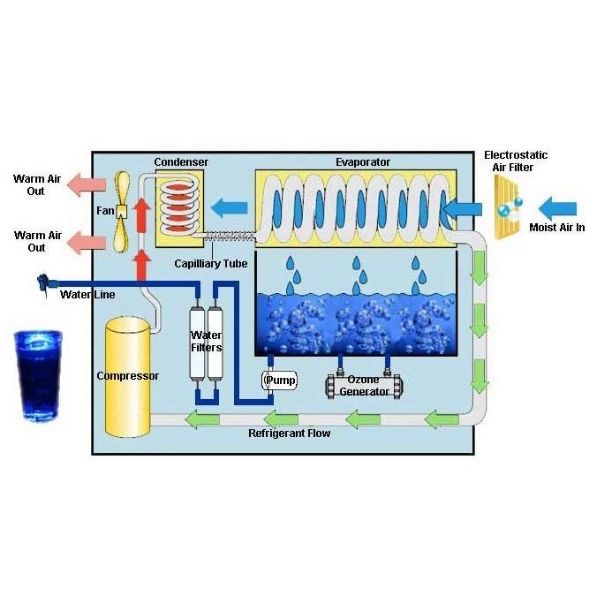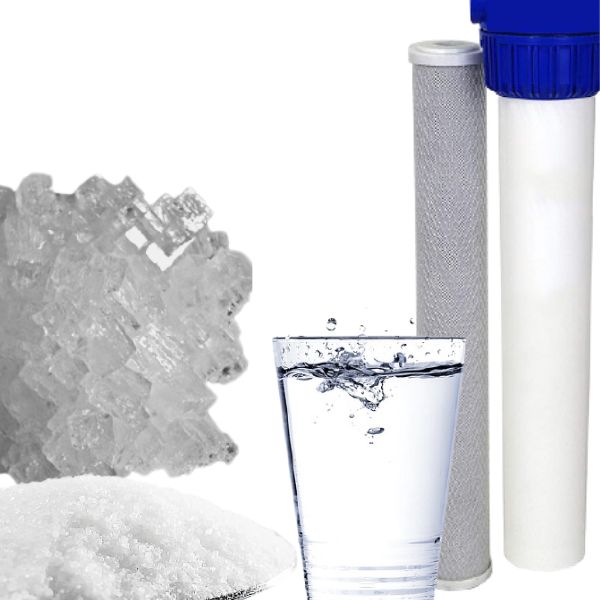How Do Water Softeners Work?
Generally, a water softener is used to remove hard minerals from your water supply and provide soft water in place of it.
Soft water is better for your hair and skin; your skin feels soft after using soft water. Arguably, it is also better for your diet and better for your pipes because it prevents mineral buildup. Your appliances also do not get mineral deposits on their exterior if you have softened water.
There are different kinds of water softeners, and they work on other techniques, but we’ll look at the one that uses the ion exchange process.
The hard water goes through a resin bed within the water softener during the softening process, where the calcium and magnesium ions are attracted to the resin beads. The water is instead filled with sodium ions and is now considered ‘soft’ water.
This is the only water softener that entirely removes all of the hardness minerals from the water.
The next stage is the water softener’s regeneration cycle, which can basically be considered the maintenance of the water softener. During this manual regeneration, brine is used to wash the water softener, specifically the resin beads.
This is because, during the process called ion exchange, the resin bed can often get saturated with the water hardness minerals.
If this keeps happening, your water softener will eventually stop working properly because it cannot exchange the ions anymore. The regeneration process exists to sort of ‘clean up’ your water softeners to keep this from happening.
In a nutshell, water softening systems are these excellent devices that provide you with softer water.

How Do I Know if My Water Softener Is Working Properly?
There are certain signs that help you determine whether your water softener is working properly or not.
No soap scum
The soap test is the easiest way to find out if your water softener is working or not. The minerals within hard water combine with soap to form a sort of scum.
If you form soap lather and can see the scum or find the soap scum on your shower faucet or bathtub or elsewhere, you know that there is a problem with your water softener performance that you need to look into.
Because the presence of soap scum clearly indicates that you still have hard water.
No water scale
Hard water has high levels of calcium carbonate and metal ions like magnesium and iron, which can result in hard water spots and scaling.
Scaling is just mineral deposits on, let’s say, your shower doors, sinks, or faucets. These are usually where most of the scaling occurs, so you should pay close attention hereafter to installing a water softener to see if this is still happening.
If your water softening system is functioning properly, then this should not be happening. This is because the water from water softeners does not have the minerals that result in scaling.
Soap washes off easily
Another excellent and easy indicator of your water softener working properly is how easy it is to wash out soap.
Your water usage increases with hard water because of how hard it is to wash off the soap from your skin or dishes.
If you find leftover soap on your skin or the dishes even after you’ve been washing for a while, it probably means that your softener is not working correctly and your taps are supplying hard water.
Paying attention to these signs is a good practice because, by them, you can identify earlier if there are even minor issues with your water softener service.
As soon as you find these signs, you should get a professional plumber to investigate them or do it yourself if you can.
How Do I Know if My Water Softener Is Not Working Properly?
These are certain tell-tale signs to answer the question of ‘does my water softener work?’
Hard water signs
You can follow a checklist to see if your taps are supplying hard water: Can you notice water spots on your dishes, shower door, or elsewhere? Do your clothes feel stiffy after you wash them? Does your skin feel dry after coming in contact with the water? Do you see mineral deposits?
If the answer to any of these is yes, that means your water softener is not working.
Skin feels squeaky
If you feel like your skin starts to feel sticky or dry after you utilize water on it, this means that you have a malfunctioning water softener.
Water tastes salty
You might be confused because a salty water taste might often come from most softeners.
If your water feels like it has too much salt, or it has begun to taste saltier than before, this might be a sign that there is a problem with the regeneration process of the water softener, and it is occurring too quickly.
Brine tank out of salt
If you notice the salt level in your brine tank has gone down, or it has gone out of salt pellets, you know it is not producing softened water because there is no possibility for it to be able to do that.

Factors That Affect the Water Softener Performance
Motor
The motor is a mechanical part of the water softening systems and has a specific lifetime. Once this time period is over, it can die out.
This is when you need to replace this motor to keep your water quality up.
Too much salt build-up
If a lot of salt builds up within the tank of your water softening system (due to negligence of due maintenance), that can also impact the working of your water systems.
Salt bridges
You usually have salt-based water softeners, the salt inside which is the main component of them. It is responsible for the softening process when the water enters the system.
So it is the essential part of the system, right? But it is also what can often cause the system to malfunction and break apart.
If a salt bridge forms inside any tank inside the water softener, that can also impact its working. You need to break these bridges up so that water can flow through unrestricted once again.
Quality of the resin bead
Even if every other part of your water softener is working perfectly, a problem with the beads can be a huge issue.
They do eventually wear out with time, and once they do, the water softening system will stop working no matter how carefully you maintain it.
Filter
One of the biggest barriers against water hardness is the filter inside your softener. If it gets clogged, the system will stop working.
Wrap-up
In order to know whether your water softener is working, utilize the owner’s manual and look for the signs mentioned above.
If there are any problems with the system that you can determine, be sure to fix them on time to keep your softeners working.
